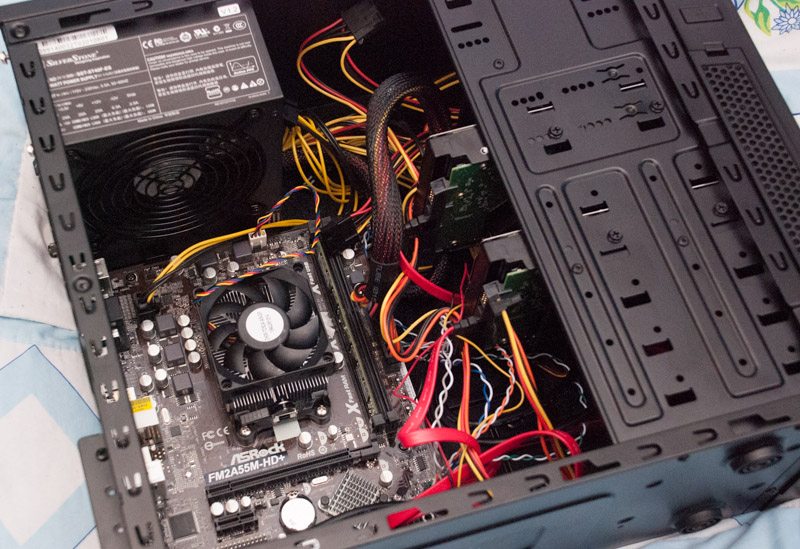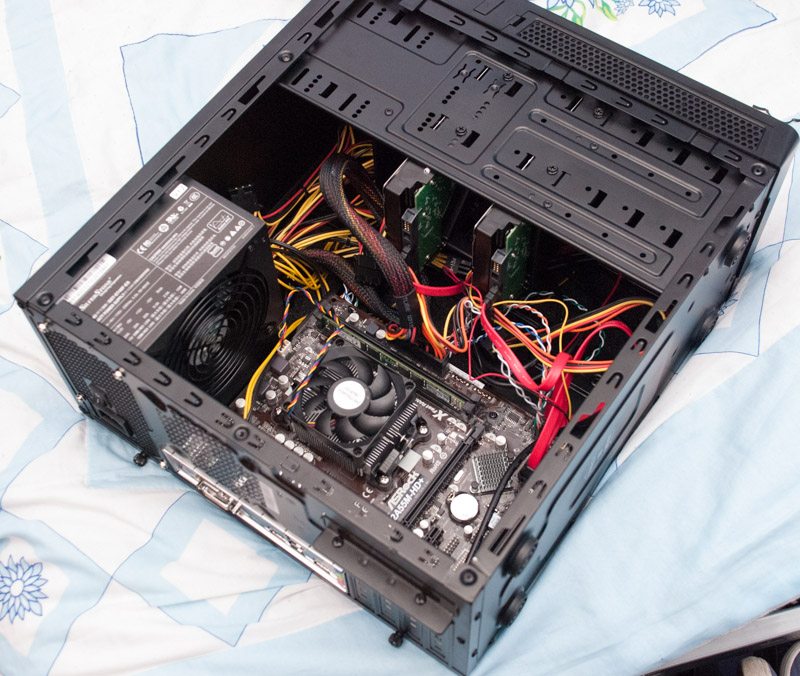The eTeknix Guide To Building Your Own NAS
Ryan Martin / 10 years ago
Building The NAS
Putting together a DIY NAS isn’t really any different to a normal system build. This is because a DIY NAS is a basic computer system designed specifically for file storage and transfer functions. As such we started as you would start any PC system build: by fitting the power supply into the case with the fan facing downwards and we then followed this by installing the rear I/O shield.

Next we installed the ASRock FM2A55M-HD+ motherboard with the AMD A4-4000 APU and Kingston 4GB DIMM attached. We installed the APU and memory while the motherboard was outside the case, we did not have to fit a backplate as we are using the stock AMD cooler to keep the cost down. If you were using a custom CPU cooler, such as a passive or low profile one, then you may be required to fit a backplate whilst the motherboard is outside of the case.

Next we installed the stock AMD CPU cooler, this is fairly easy to do as you simply place it over the APU, align the two locking notches and then push the lever down to secure into place. We also installed the various motherboard power connectors and the CPU fan connector.

Next we added the two Western Digital 2TB Red hard drives, we opted to space these our by just a single 3.5 inch bay to ensure improved airflow and less vibration transfer. You could spread the drives out even further but in our case the front intake fan is centrally located so we wanted to ensure adequate cooling. As we’ve already explained heat and vibration transfer shouldn’t be too much of an issue anyway because Western Digital’s Red series drives have unique firmware that minimises heat output, vibration output and ensures suitability for 24/7 operation. We also connected all the front panel headers and SATA cables at this stage.

The completed system is far from a work of art. There is no cable management behind the motherboard tray, due to this being a compact budget micro-ATX case, and this results in a mess of cables being visible. You can stuff these cables into the drive bays and tie them down to clean things up a bit but the reality is you’ll only be able to keep things tidy by using a modular power supply with short cables and lots of cable ties, or by using a more expensive case with better management options. Cable management isn’t really essential though because there isn’t anything that runs particularly hot in this case and those cables are not obstructing airflow to the hard drives as the bulk of the cables are at the top of the case whereas the fan is in the middle.

As you can see there is space for a further three 3.5 inch drives as well as a few more up at the top if you use some 5.25 inch to 3.5 inch bay adapters. The build only took 15 minutes because it is so simple to do, the hardest part was attaching the front panel connectors which you do not really need anyway – only the power button is essential and even this isn’t that important because once turned on you will likely have your NAS on 24/7, or if you put it to sleep frequently the waking mechanism of choice should be the Wake On LAN “magic packet” which does not require any physical interaction with the system.




















